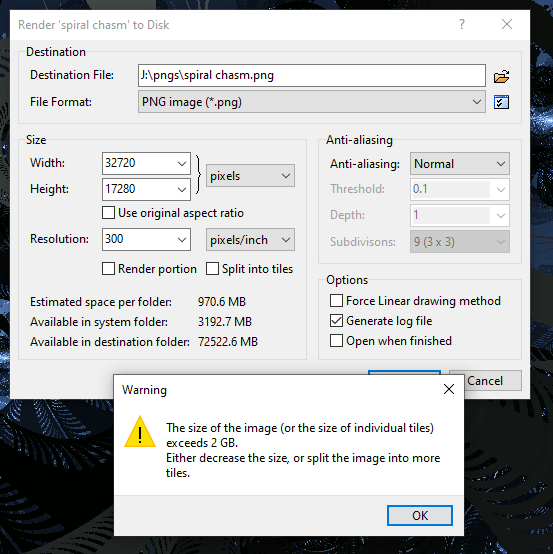Hello,
I just ran into this new problem. When I render to disk in high resolution, it tells me that I have to render in tiles because the image size would exceed 2 GB. This didn't happen before. Just to make sure, I tried to re-render an older image which previously worked, and UF is now also refusing to render it.
In one instance, the predicted file size was around 900 MB, the sum total of the rendered tiles was about 650 MB, but it would not render in one piece.

I wonder if anything was changed about this check in the latest version because this behavior is certainly new to me.
Using montage (part of ImageMagick) to merge the tiles exceeds 16 GB of RAM and fails, despite the combined file sizes being less than 1 GB, so I would have to do it manually, which would be a bit annoying. 
Any ideas how to deal with this on my end for the time being?
Best regards,
Phillip
Hello,
I just ran into this new problem. When I render to disk in high resolution, it tells me that I have to render in tiles because the image size would exceed 2 GB. This didn't happen before. Just to make sure, I tried to re-render an older image which previously worked, and UF is now also refusing to render it.
In one instance, the predicted file size was around 900 MB, the sum total of the rendered tiles was about 650 MB, but it would not render in one piece.

I wonder if anything was changed about this check in the latest version because this behavior is certainly new to me.
Using montage (part of ImageMagick) to merge the tiles exceeds 16 GB of RAM and fails, despite the combined file sizes being less than 1 GB, so I would have to do it manually, which would be a bit annoying. :(
Any ideas how to deal with this on my end for the time being?
Best regards,
Phillip

